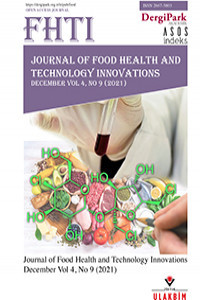Technological Aspects for the Production of Beta-Galacto-Oligosaccharides (ß-GalOS) and its Physiological Properties for Health Benefits
Technological Aspects for the Production of Beta-Galacto-Oligosaccharides (ß-GalOS) and its Physiological Properties for Health Benefits
Beta-Galacto-oligosahaarides (β-GalOS) are naturally occurred in milk at low concentration, and are found in all dairy products. ß-GalOS are commercially produced enzymatically by trans glalactosylation of milk sugar lactose as a substrate using the microbial enzyme ß-galactosidase (EC 3.2.1.23) derived from bacteria, yeasts or molds. ß-GalOS are one of functional oligosaccharides and are known by different names as oligogalactosyllactose, oligogalactose, oligolactose, tranas-galactosylated oligo- saccharide, and transgalacto-oligosaccharide. Chemical structures of ß-GalOs are chain of galactose units that arise through consecutive transgalactosylation enzymatic reactions, linked together into terminal glucose unit in the disaccharide lactose. The degree of galactose polymerization in ß-GalOS are vary and ranging from 2 to 8 galactose units. This degree of polymerization depends on the property and source of the enzyme ß-galactosidase used in the process. ß-GalOS are pass undigested into the colon where increase bowel mass and act as prebiotics (growth factor) for good bacteria (probiotics) in the colon. ß-GalOS are commonly used for stomach disorders such as constipation and preventing from allergies specially for infants. It is also, reported that ß-GalOS can prevent consumers from colon cancer and rectal cancer.
Keywords:
Beta-glacto-oligiosaccharides, Glacto-oligosaccharides, GalOS, ß-GaloS, GOS, ß-transglucosidase, lactase, probiotics prebiotics,
___
- Montira Intanon, Sheryl Lozel Arreola, Ngoc Hung Pham, Wolfgang Kneifel, Dietmar Haltrich, and Thu-Ha Nguyen. 2014 Nature and biosynthesis of galacto-oligosaccharides related to oligosaccharides in human breast milk. FEMS Microbiol Lett. 353 (2): 89–97
- ISSN: 2667-5803
- Başlangıç: 2018
- Yayıncı: Dokuz Eylül Teknoloji Geliştirme Anonim Şirketi
Sayıdaki Diğer Makaleler
Antioxidant and Functional Nutraceutical Treatments Following Minimally Invasive (Robotical) Surgery
